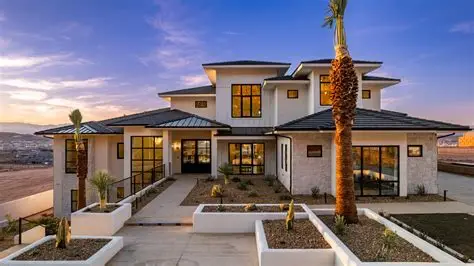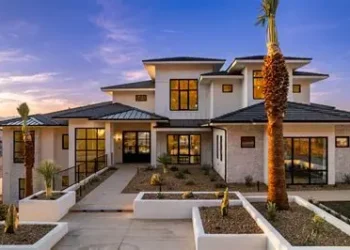Exploring the intriguing blend of traditional and contemporary styles in hybrid home designs opens up a world of possibilities where classic charm harmoniously merges with cutting-edge trends. From interior to exterior, the juxtaposition of old-world elements with sleek modern features creates a unique aesthetic that is both captivating and functional.
Delving deeper into the realm of hybrid home designs reveals a dynamic interplay between traditional architectural elements and contemporary design concepts, offering homeowners a truly bespoke living experience that seamlessly blends the best of both worlds.
. Incorporating pieces from both styles can create a dynamic and visually appealing space. For example, pairing a sleek modern sofa with a vintage Persian rug can add depth and character to a room.
Traditional Home Design Features
Traditional home designs often include the following key elements:Key Elements of Traditional Home Designs
- Pitched roofs with gables
- Symmetrical facade
- Formal and defined interior spaces
- Use of natural materials like wood and stone
- Decorative moldings and trim
Typical Color Schemes
In traditional homes, color schemes tend to be more subdued and classic, with shades like:- Earthy tones such as beige, brown, and terracotta
- Soft pastels like pale blue, sage green, and cream
- Deep rich colors such as navy, burgundy, and forest green
Importance of Symmetry
Symmetry plays a crucial role in traditional architecture as it creates a sense of balance and harmony. It helps in establishing a visually pleasing facade and interior layout, reflecting a sense of order and stability. The use of symmetrical designs also conveys a sense of tradition and timelessness in the overall aesthetic of the home.Contemporary Home Design Features
In contemporary home designs, there are several key characteristics that set them apart from traditional styles. These features often focus on sleek lines, open floor plans, and the integration of modern technology.Use of Technology in Contemporary Homes
Contemporary homes are known for their incorporation of cutting-edge technology. This can include smart home systems that allow for remote control of lighting, heating, and security systems. Additionally, contemporary homes often feature energy-efficient appliances and sustainable building materials to minimize environmental impact.Minimalism in Contemporary Architecture
Minimalism plays a significant role in contemporary architecture, with a focus on simplicity and clean lines. This design approach emphasizes the use of open spaces, natural light, and a neutral color palette. By reducing clutter and unnecessary ornamentation, contemporary homes achieve a sense of calm and sophistication.Hybrid Home Design Concept
Hybrid home designs combine elements from traditional and contemporary styles to create a unique and harmonious living space that blends the best of both worlds. When comparing traditional and contemporary design elements, traditional homes often feature classic architectural details such as pitched roofs, ornate moldings, and intricate woodwork. In contrast, contemporary homes tend to have clean lines, open floor plans, and a focus on minimalism and functionality.Integration of Traditional and Contemporary Styles
One way to integrate traditional and contemporary styles in a hybrid home design is by incorporating modern materials and technology into a traditional architectural framework. For example, a historic home with a traditional exterior could be renovated with sleek, energy-efficient windows and smart home technology. Another approach is to mix traditional and contemporary furniture and decor. This can be achieved by pairing a vintage dining table with modern chairs, or incorporating abstract art pieces into a room with classic architectural features.Interior Design in Hybrid Homes
When it comes to interior design in hybrid homes, the blending of traditional and contemporary styles plays a crucial role in creating a unique and harmonious living space. The right mix of furniture and decor is essential to achieving a balanced aesthetic that combines the best of both worlds.Blending Traditional and Contemporary Elements
In interior design for hybrid homes, it's important to find the perfect balance between traditional and contemporary elementsRole of Furniture and Decor
- Choose furniture pieces that blend traditional craftsmanship with modern design elements. For instance, a classic wooden dining table paired with contemporary chairs can create a striking contrast.
- Experiment with mixing different textures and materials to add visual interest. Combining rustic elements like exposed brick walls with sleek metal accents can create a unique look.
- Use decor items such as artwork, lighting fixtures, and accessories to tie the traditional and contemporary elements together. A modern chandelier hanging above a vintage wooden dining table can create a stunning focal point in a room.
Tips for Achieving Harmony
- Start with a neutral color palette as a base and then add pops of color with decor items or accent walls.
- Focus on creating a cohesive flow throughout the space by repeating similar colors, materials, or patterns.
- Don't be afraid to mix and match styles, but make sure there is a common thread that ties everything together, such as a shared color scheme or design element.
Exterior Design in Hybrid Homes
Traditional and contemporary features can seamlessly coexist in the exterior design of hybrid homes, creating a unique and harmonious look that blends the best of both styles. The use of materials like wood, metal, and glass plays a crucial role in achieving this balance and adding visual interest to the facade.Innovative Material Usage
- Wooden accents: Incorporating traditional wooden elements such as siding, shutters, or trim can add warmth and character to a contemporary exterior design.
- Metal finishes: Utilizing metal materials like steel or aluminum for roofing, railings, or decorative features can introduce a sleek and modern aesthetic to a traditional facade.
- Glass elements: Introducing large windows, glass doors, or skylights can bring natural light into the home and create a seamless connection between indoor and outdoor spaces, blending traditional and contemporary design elements.
Innovative Design Techniques
- Mixing architectural styles: Combining traditional rooflines and shapes with contemporary geometric forms can result in a visually striking and dynamic exterior design.
- Contrasting textures: Pairing materials like smooth stucco with rough stone or brick can create a sense of depth and dimension, enhancing the overall look of a hybrid home.
- Embracing asymmetry: Playing with asymmetrical layouts, varying roof pitches, or unconventional window placements can add a touch of whimsy and modernity to a traditionally inspired exterior.












